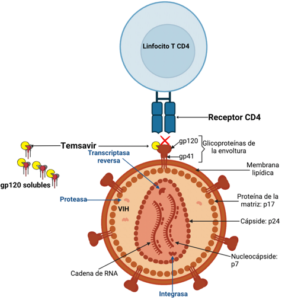José Luis Parra Herrera1, Samantha Pérez Cavazos2, Silvia Denise Ponce Campos3, Elvia Jacobo Medrano4
- Servicio de Infectología, Hospital General ISSSTE Aguascalientes.
- Epidemiología Hospitalaria Christus Muguerza, Hospital Cumbres.
- Servicio de Neumología Hospital General ISSSTE Aguascalientes.
- Servicio de Hematología Hospital General ISSSTE Aguascalientes.
Background
Pancytopenia is a recognized component in hematological and infectious diseases such as HIV. The objective of this case report is to highlight the coexistence of both conditions in an elderly patient, which represents a diagnostic challenge.
Case
In June 2022, a 75-year-old woman was diagnosed with severe anemia resulting from upper gastrointestinal bleeding. Five months later, she presented with deep vein thrombosis in left limb and persisted with anemia leading to a diagnosis of hemolytic autoimmune anemia, receiving treatment with immunosuppressives.
In March 2023, the patient presented to the emergency department with a two-week history of asthenia, adynamia, pigmenturia, dyspnea, and unintentional weight loss of 10kg. Physical examination revealed oropharyngeal candidiasis and slightly decreased breath sounds in both lungs. Vital signs were as follows: temperature 36.5°C, respiratory rate 24 bpm, heart rate 110 bpm, blood pressure 107/76 mmHg, and oxygen saturation of 84% on room air. Laboratory findings showed a white blood cell count of 4,000/μL, with neutrophils at 2800/mm3, lymphocytes at 800/mm3. Hemoglobin.
level was 6.3 g/dL and platelet count was 91×109/L. Additionally, LDH was 980 u/L. The patient tested positive for HIV antibodies. High-resolution CT scan revealed bilateral ground glass opacities.
A diagnosis of Pneumocystis jirovecii pneumonia was made, and treatment with TMP/SMX was initiated. The patient’s HIV viral load was 201,311 copies/mL (5.3 log copies/mL), and the CD4 count was 65 cells/mm3 (11%). No evidence of other opportunistic infections was found, and antiretroviral treatment was started.
Due to pancytopenia, a bone marrow biopsy and aspiration were performed, histopathological report reveals medullary hypoplasia. Flow cytometric immunophenotyping identified clones of paroxysmal nocturnal hemoglobinuria in monocytes (CD14), granulocytes (CD24), and erythrocytes (CD59).
Conclusion
This case emphasizes the uncommon association of hematologic disorders and advanced HIV infection in an elderly patient, highlighting the importance of considering acquired immunodeficiencies as potential etiologies, even in geriatric populations.






